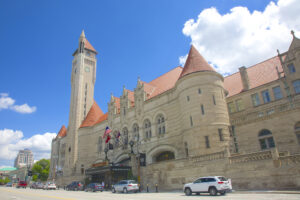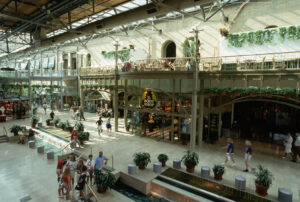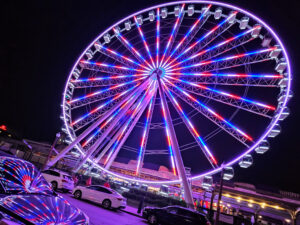
St. Louis Union Station’s Historical Beauty is a Must-See for Code Council Conference and Expo Attendees
St. Louis Union Station offers 2023 Code Council Annual Conference and Expo attendees the opportunity to explore a part of the city’s history.
As building safety professionals solidify their plans for the International Code Council’s 2023 Annual Conference and Expo (October 8-11) at America’s Center in St. Louis, MO, they’ll find no shortage of downtime excursions to keep busy.
Once a busy train station that welcomed more than 100,000 travelers a day, St. Louis Union Station thrived through three distinct iterations, starting in 1894.
At that time, trains were the dominant form of travel. President Harry Truman was among the notable individuals who visited Union Station, along with Joe DiMaggio, players from the St. Louis Browns and St. Louis Cardinals and actress Joan Crawford.
SEE RELATED: St. Louis Cardinals’ Rich History on Display at Busch Stadium
“St. Louis Union Station was very much one of the more popular train stations during the ‘40s, ‘50s and part of the ‘60s,” said Cameron Schoeffel, Director of Sales, Marketing & Entertainment at St. Louis Union Station. “It was one of the largest depots for World War II, so a lot of soldiers going overseas essentially started their journey here.”

From Trains and Traveling to Boutique Shopping
While trains remain an important part of the supply chain, they are no longer the leading form of travel thanks to the addition of automobiles and planes.
And, as the remaining train activity began to divert away from St. Louis, it became apparent that it was time to transform Union Station.
“The last train departed here on Halloween 1978,” said Schoeffel. “For about seven years, the future of the property was somewhat undetermined. It was almost condemned by the city and torn down.”
Union Station’s future came into focus when a business leader decided to reinvent the property as a retail space and reopened the complex in 1985. With a mixture of boutiques and restaurants, Union Station quickly became a go-to destination for people looking to shop and eat in Downtown St. Louis.

St. Louis continued to grow in popularity with the addition of Busch Stadium (home of the St. Louis Cardinals), Enterprise Center (home of the St. Louis Blues) and City Museum nearby. But Union Station’s time as a mixed-use complex would eventually come to an end; as new retail establishments opened closer to the suburbs, the lure for downtown shopping started to wane.
Consequently, a growing number of boutiques opted not to renew their lease agreements, though some stuck around through the mid-2010s. By then, Union Station’s next transformation was already underway.
A Grand Vision for the Future
Lodging Hospitality Management purchased Union Station in the early 2010s with the goal of creating a family destination that pays homage to the train station’s incredible history.
While this new vision made room for shopping and eating, including multiple restaurants (some of which drew inspiration from Union Station’s past), the St. Louis Aquarium became its main attraction. Featuring 120,000 square feet of aquatic wonder, 13,000 animals, 257 species and 44 exhibits, the St. Louis Aquarium is an exciting attraction for all ages.
Union Station also offers a 200-foot high observation wheel, a train-themed illusionary exhibit for taking selfies, a mirror maze, two different light shows, a AAA Four Diamond Hotel and more.

These attractions are heightened by an architectural design that emulates Union Station’s beautiful beginning when the building was designed to wow all who entered.
From day one, visitors were treated to the spectacular visuals of Union Station’s Grand Hall. Initially serving as the main terminal for the train station, Grand Hall featured a 65-foot barrel-vaulted ceiling and a two-ton wrought-iron chandelier with 350 light bulbs. The chandelier has since been removed, but the impeccable ceiling remains as eye-catching as ever with impressive archways and an allegorical stained-glass window.
The window depicts three women, one from each of the leading train stations during the 1890s: St. Louis, New York and San Francisco.
The window is surrounded by the Whispering Arch, an archway that allows people to clearly hear each other just by whispering on either side. Schoeffel said that the whispering effect was not necessarily intended by architect Theodore Link, but it has become an iconic part of Union Station regardless. Link also designed the appropriately named Link Room, a historic headhouse that has hosted presidents and other prominent figures.
“A lot of really cool history took place in those different areas,” said Schoeffel. “The historic headhouse is part of the original portion of the hotel, which was originally called the Terminal Hotel. We renovated those rooms – they’re beautifully done with nods to a lot of the history that goes into St. Louis Union Station, along with beautiful views of Market Street.”
Learn more about the International Code Council’s 2023 Annual Conference, here.








